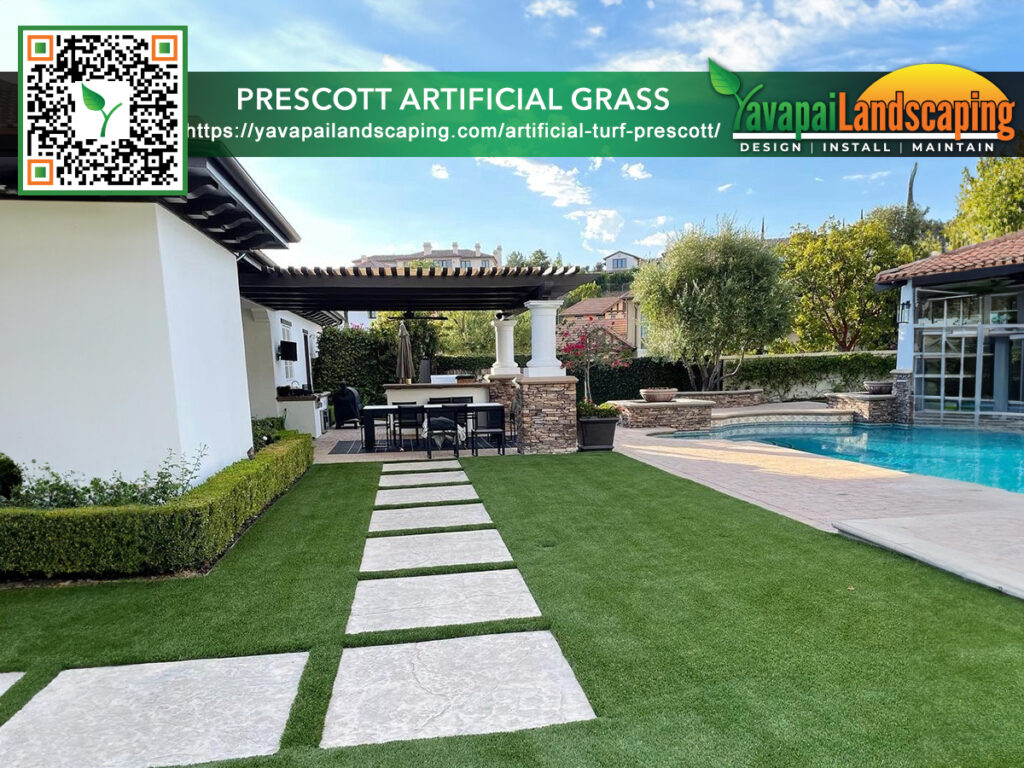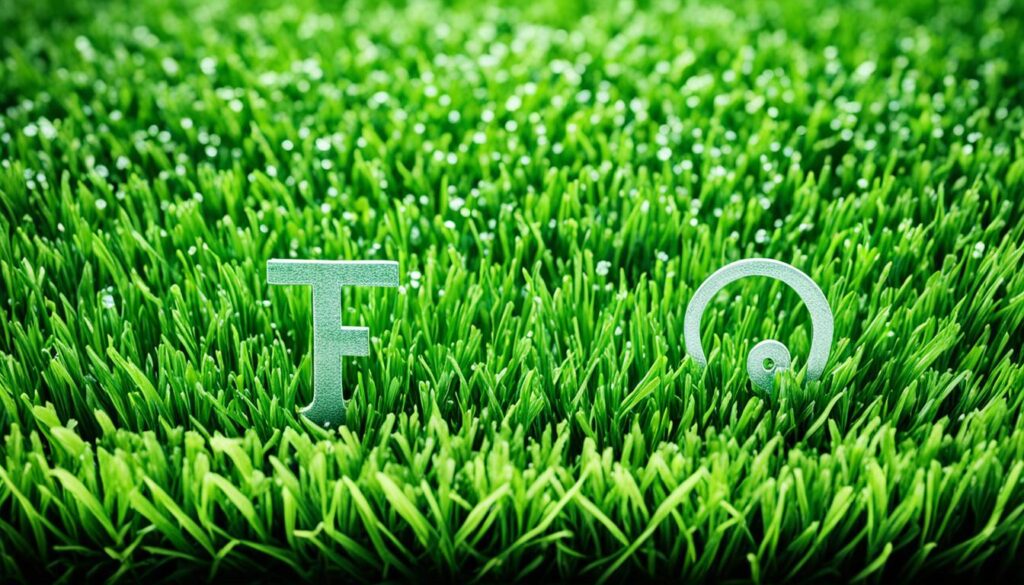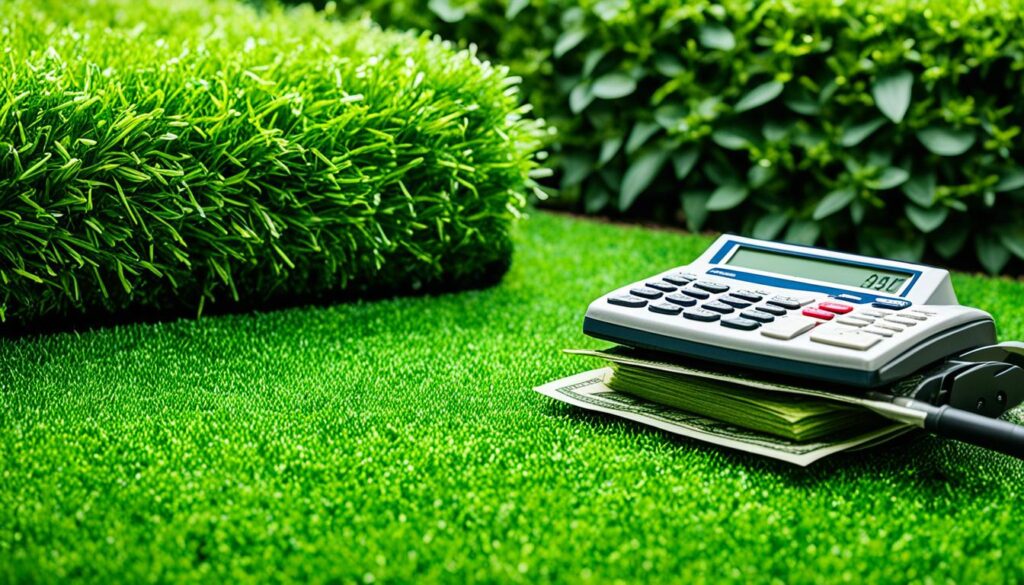
Artificial grass has gained popularity among homeowners for its numerous benefits, including significant long-term cost savings. Investing in artificial grass offers financial advantages that go beyond the initial installation costs. In this section, we will explore how artificial grass can help homeowners save money in the long run.
Key Takeaways:
- Artificial grass provides long-term cost savings for homeowners.
- Investing in artificial grass offers financial benefits beyond the initial installation costs.
- Water bills and irrigation costs can be significantly reduced with artificial grass.
- Elimination of lawn maintenance expenses contributes to the cost-effectiveness of synthetic turf.
- Artificial grass reduces the need for pest control measures, resulting in additional savings.
Understanding the initial investment and long-term savings
When considering the switch to artificial grass, it’s essential to understand the initial investment and the long-term savings it can provide. While the upfront cost may be higher than natural grass, the advantages of synthetic grass and its proven return on investment (ROI) make it a financially wise choice.
Let’s begin by comparing the cost of installing artificial turf to that of traditional natural grass. While the initial investment for artificial grass may be higher due to materials and labor, it’s important to consider the long-term savings it offers. Natural grass requires continuous maintenance, which includes watering, mowing, fertilizing, and pest control. Over time, the recurring expenses associated with natural grass can add up significantly.
On the other hand, artificial grass requires minimal maintenance and eliminates the need for costly lawn care activities. This results in considerable savings both in terms of time and money. Homeowners can end up saving thousands of dollars annually, making artificial grass an attractive option for long-term cost savings.
Moreover, synthetic grass offers several advantages that contribute to its cost-effectiveness. It requires no water, reducing water bills and saving precious resources. With water scarcity being a concern in many areas, installing artificial grass helps conserve water and lowers overall water usage.
Additionally, the durability and longevity of artificial grass further enhance its cost-effectiveness. Unlike natural grass, which can become damaged and require constant repairs, artificial grass is designed to withstand heavy foot traffic and withstand various weather conditions. This means reduced maintenance costs and longer-lasting beauty.
Reduction in water bills and irrigation costs
One of the significant financial benefits of artificial grass is the substantial savings in water bills and irrigation costs. By installing artificial grass, homeowners can eliminate the need for regular watering and expensive irrigation systems, leading to long-term cost savings.
Natural grass lawns require constant watering to maintain their lush appearance, especially in arid regions like Prescott, AZ. This frequent irrigation not only adds up to high water bills but also contributes to water scarcity concerns. With artificial grass, however, homeowners can enjoy a beautifully green lawn without the hefty water expenses.
Unlike natural grass, artificial grass does not require regular watering. It withstands drought conditions and stays green and vibrant year-round, regardless of weather conditions. This means homeowners can save significantly on water bills and conserve water resources, making it an environmentally-friendly choice as well.
Moreover, the absence of irrigation systems in artificial grass eliminates the need for costly maintenance and repairs. Traditional irrigation systems are prone to leaks, clogs, and other issues that can quickly become expensive to fix. By switching to artificial grass, homeowners can avoid these unnecessary expenses and allocate their budget toward other essential needs.
It’s worth highlighting that the financial benefits of artificial grass extend beyond direct savings in water bills and irrigation costs. When artificial grass is installed, it reduces the reliance on water-intensive lawn maintenance practices, such as using fertilizers and chemicals. This further contributes to financial savings by eliminating the need to purchase these lawn care products regularly.

Artificial Grass Water and Irrigation Cost Comparison
To demonstrate the financial impact, let’s compare the potential water and irrigation cost savings of artificial grass versus natural grass over a 10-year period:
| Natural Grass | Artificial Grass | |
|---|---|---|
| Watering Frequency | Daily | None |
| Average Water Bill per Month | $80 | $0 |
| Irrigation System Installation Cost | $3,000 | $0 |
| Irrigation System Maintenance Cost over 10 Years | $2,000 | $0 |
| Total Water and Irrigation Costs over 10 Years | $11,600 | $0 |
As shown in the table above, homeowners can save a significant amount of money by choosing artificial grass for their lawns. Over a 10-year period, the total savings from water bills and irrigation costs alone can reach $11,600. These savings can be further multiplied when considering additional savings from reduced lawn care expenses.
By investing in artificial grass, homeowners not only enjoy a lush and maintenance-free lawn but also experience long-term financial benefits. The reduction in water bills and irrigation costs contributes to substantial savings that positively impact household budgets, making artificial grass a cost-effective and sustainable choice.
Elimination of lawn maintenance expenses
One of the key cost-saving benefits of artificial grass is the elimination of ongoing lawn maintenance expenses. Unlike natural grass, synthetic turf does not require mowing, fertilizing, or other traditional lawn care tasks. This not only saves homeowners valuable time but also reduces the financial burden associated with maintaining a lush green lawn.
By installing artificial grass, homeowners can bid farewell to costly lawnmower repairs, expensive fertilizers, and other maintenance products. The durability and resilience of synthetic turf ensure that it maintains its pristine appearance without the need for constant upkeep.
Furthermore, artificial grass does not require watering, which can lead to substantial savings on water bills. With natural grass, homeowners must irrigate regularly to keep it healthy and vibrant. However, artificial grass retains its lush green color without any water, making it an environmentally friendly and cost-effective alternative.
Reduced Maintenance Requirements and Associated Savings
The cost-effectiveness of synthetic turf lies in its reduced maintenance requirements. Without the need for mowing, watering, or fertilizing, homeowners can save money on purchasing and maintaining lawnmowers, sprinkler systems, fertilizers, and other lawn care equipment.
Additionally, artificial grass eliminates the need for expensive professional landscaping services. Homeowners can take pride in their perfectly manicured lawns without having to invest in regular maintenance contracts or professional lawn care services.
Not only does eliminating lawn maintenance expenses save homeowners money in the long run, but it also provides peace of mind by reducing the time and effort required to maintain a beautiful yard.

Synthetic Turf: A Cost-Effective Choice
Switching to artificial grass offers homeowners a cost-effective solution for maintaining a stunning outdoor space year-round. The initial investment in synthetic turf pays off over time through significant savings in maintenance expenses, including mowing, watering, and fertilizing.
By embracing the financial benefits of artificial grass, homeowners can redirect their time, energy, and money toward other aspects of their lives, knowing that their lawns will always look pristine and inviting. Not only does synthetic turf offer a beautiful and low-maintenance alternative to natural grass, but it also proves to be a smart long-term investment with compelling cost-effectiveness. Give this impressive piece a read.
Decreased pest control and lawn care costs
When it comes to maintaining a natural grass lawn, pest control and lawn care expenses can quickly add up. However, with artificial grass, homeowners can enjoy decreased costs in these areas, resulting in long-term savings.
One of the key advantages of artificial grass is that it eliminates the need for pesticides, herbicides, and insecticides. Unlike natural grass, which requires regular treatments to keep pests and weeds at bay, artificial grass provides a naturally pest-resistant surface. This not only saves homeowners money but also reduces their reliance on harmful chemicals that can have negative environmental impacts.
In addition to eliminating the need for pesticides, artificial grass requires minimal lawn care compared to natural grass. Traditional lawn maintenance, such as mowing, fertilizing, and aerating, can be time-consuming and expensive. With artificial grass, these tasks become a thing of the past, resulting in significant cost savings over time.
The financial benefits of artificial grass extend beyond reduced pest control and lawn care costs. By investing in artificial grass, homeowners can enjoy a low-maintenance lawn that stays lush and green year-round. This means no more spending money on watering and irrigation systems to keep natural grass alive during dry spells or hot summers.
Overall, artificial grass offers homeowners the opportunity to enjoy a beautiful, hassle-free lawn while saving money on maintenance and pest control. The long-term cost savings associated with artificial grass make it an attractive and practical choice for those seeking a sustainable and cost-effective alternative to natural grass.
The Financial Benefits of Artificial Grass
| Expense | Natural Grass | Artificial Grass |
|---|---|---|
| Pesticides and Herbicides | Regular applications needed | Not required |
| Lawn Care Maintenance | Mowing, fertilizing, aerating | Minimal maintenance |
| Watering and Irrigation | Regular watering required | No watering necessary |
Durability and longevity of artificial grass
When considering the long-term cost savings of artificial grass, one cannot overlook the durability and longevity it offers, particularly in the Prescott, AZ area. Unlike natural grass, which can wear down and require frequent replacements, artificial grass is designed to withstand constant use and environmental factors, allowing it to maintain its vibrant appearance over time.
With its advanced materials and technology, artificial grass is built to withstand harsh weather conditions, including extreme heat and drought, common in the Prescott, AZ area. This resilience not only ensures a consistently green lawn but also eliminates the need for costly repairs and replacements that can accrue with natural grass.
Additionally, the longevity of artificial grass translates to significant long-term cost savings. Homeowners can enjoy the financial benefits of reduced maintenance and upkeep, eliminating the ongoing expenses of mowing, fertilizing, and watering associated with natural grass lawns. By investing in artificial grass, homeowners in Prescott, AZ can save on their water bills and reduce their reliance on irrigation systems, leading to substantial savings over time.
Furthermore, the durability of artificial grass makes it an ideal choice for high-traffic areas and pet-friendly households. Its resistance to wear and tear ensures that it will not become patchy or worn down, providing a consistently lush and inviting lawn for years to come. The ability to withstand heavy foot traffic and pet activity without compromising its appearance or functionality contributes to the long-term cost savings associated with artificial grass.
Yavapai Landscaping Prescott offers free estimates for Prescott and nearby locations for landscaping and tree services, which include tree elimination, tree pruning, stump grinding, land clearing, storm clean-up, irrigation, and emergency tree care.
